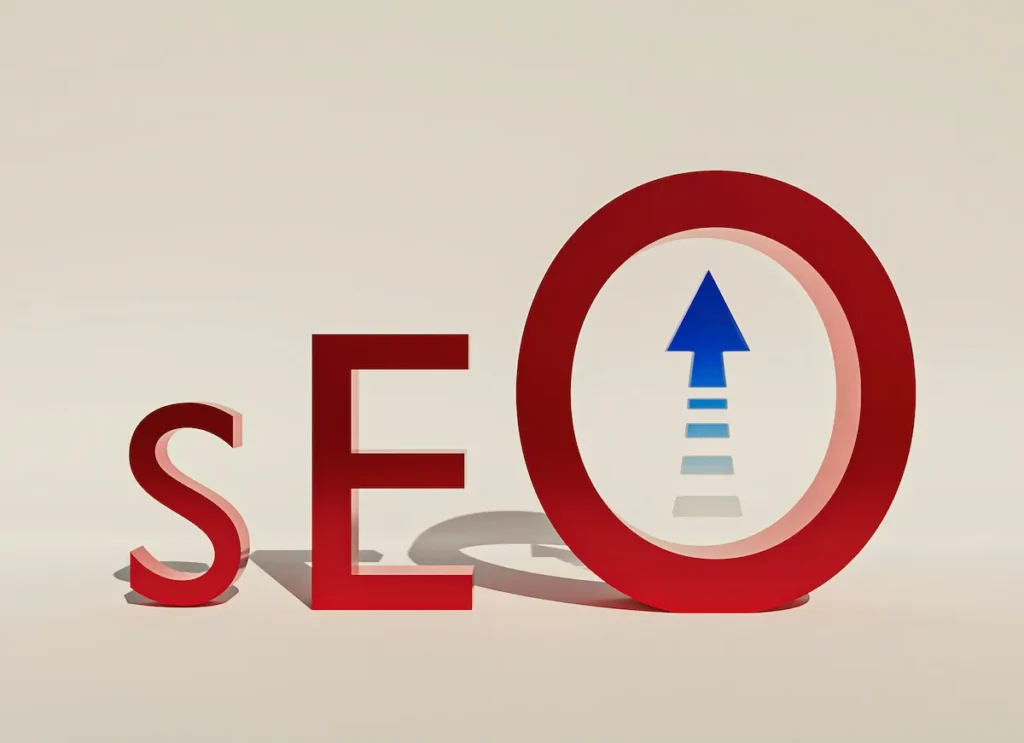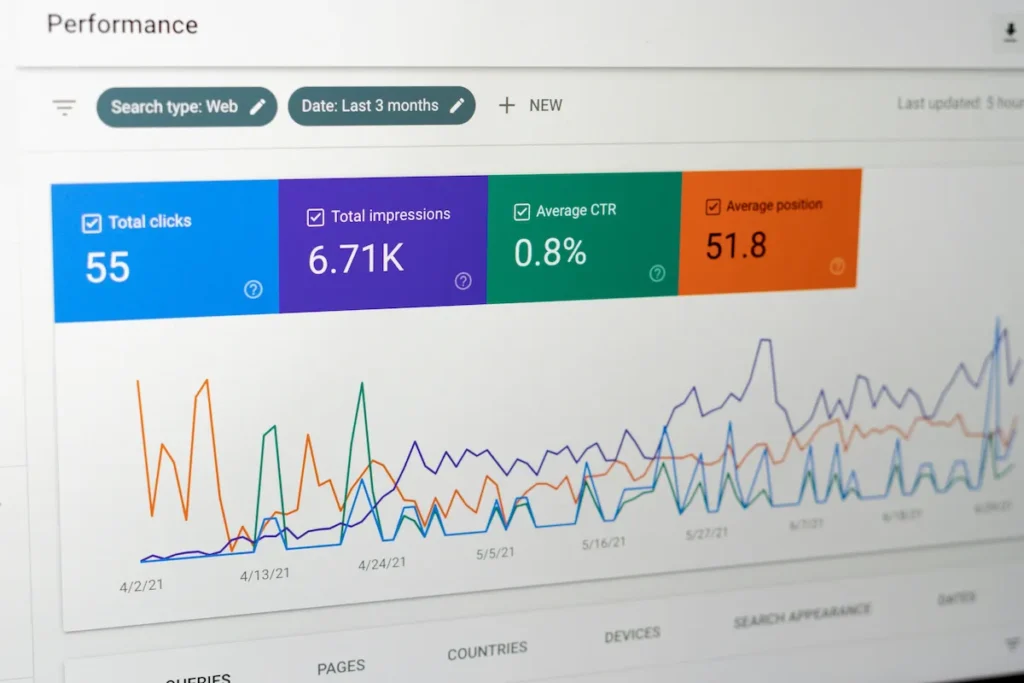With AI search tools such as ChatGPT, Perplexity, and Google’s AI overviews radically changing how people search for information online, brands that sell products or services online are wondering; Is SEO dead? Should I invest in an AI SEO strategy in 2025, or are those efforts better spent elsewhere?
The short answer is that no, SEO is not dead. However, it’s evolving at unprecedented levels, making it crucial for brands to adapt in order to remain visible online.
Whether we refer to it as Search Engine Optimization (SEO), Answer Engine Optimization (AEO), or Generative Engine Optimization ( GEO), its goal is the same at the core: Helping brands remain visible online.
In this blog, I will reveal what is changing and share some tips that brands should implement when coming up with AI and SEO strategies in the AI era.

The AI Disruption: The Impact of AI to User Search Behaviour and Search Engines
Gone are the days when users were limited to a handful of keywords when doing a search online.
The rise of AI search engines such as Google’s AI Overviews, ChatGPT, Perplexity, and others has fundamentally changed how users discover and engage with content.
Instead of clicking through to websites, users now receive direct, synthesized answers from AI tools.
Recent studies indicate that over 58% of Gen Z and millennials are now utilizing AI tools, such as ChatGPT, to search, rather than relying on traditional Google queries.
Google’s own AI Overviews have reduced click-through rates for many organic results by as much as 20–45% in some verticals.
What this means is that your target audience are finding you through various other means in addition to Google search.
Therefore, your SEO strategy for 2025 must consider all these shifts in search as a result of AI influence.

How Users Are Finding You Online In 2025
Let’s consider an example of someone running an online coaching business. Here’s how AI has changed how their target audience finds them online:
Before AI search (traditional SEO era):
A potential client might have Googled:
“career coach near me”
“how to become more confident”
These were short, keyword-stuffed queries. Ranking for them meant you’d appear on the first page and likely get the click.
Now (AI search era):
Users input longer, more detailed prompts like:
“I’m 35, stuck in a mid-level job, and struggling with confidence. What kind of coaching would help me grow into a leadership role?”
Or
“Recommend a virtual career coach who specializes in helping introverts become better public speakers, preferably female, and with experience in tech.”
Instead of serving the user with a list of relevant links, AI-powered search engines are analyzing context, intent and tone, and then responding by summarizing the most relevant content from the web.
We’ve also seen these AI search tools recommend a handful of sources for further reading.
This shift means two things:
1. Keyword targeting alone is no longer sufficient – you need structured, relevant, expert-level content that anticipates these kinds of complex queries.
2. AI engines cite only a few trusted sources – brands that don’t demonstrate authority and clarity risk becoming invisible.
At samthemarketingpro.com, we see this disruption as an opportunity for you to shine where others are not.
Our AI SEO strategy extends beyond basic SEO, optimizing your content for both human readers and AI search engines.

The Fundamentals of SEO Remain the Same
While AI has changed how users find you online and how AI search engines recommend brands to readers, the SEO fundamentals remain the same.
Google and other AI models still rely on structured, crawlable, expert-level content to identify trusted sources. What’s changed is how that content is processed and surfaced.
If your website isn’t crawlable, indexable or lacks clear topical authority, AI search engines won’t rank or cite it.
Here are some of the core principles of AI that must be included in your AI SEO strategy:
1. Crawlability and Indexation
Both traditional search engines and AI-powered SEO tools must be able to find and understand your content to serve it to users.
To explain this simply, let’s use a library analogy:
Imagine your website is a library, and each web page, like About Us, Services, or Contact, is a book. The entire site is the library itself.
Crawlability is like having open, well-labelled shelves. The search engine “librarian” (Googlebot or AI crawlers) needs to walk in and browse freely.
If some shelves are blocked, mislabeled, or behind locked doors, the librarian can’t access your content. It, therefore, remains invisible.
Indexability is about whether those books get catalogued. After reading a page, the librarian decides if it belongs in the public index (Google’s search database).
If the content is outdated, confusing, or duplicative, it may never get added to the catalogue at all.
In SEO terms:
- Broken links, noindex tags, or poor site structure = locked shelves and missing labels
- Crawlable + indexable pages = content that’s visible, accessible, and ready to rank
That’s why at Sam the Marketing Pro, we always start every SEO project with a technical site audit.
Using tools like Screaming Frog and Google Search Console, we scan your entire website the same way a crawler would. If Screaming Frog can’t access a page, neither can Google.
2. Structured Content and Schema Markup
Best SEO strategies for AI visibility tools must encompass the use of structured content and schema markup.
This simply means that to get cited by AI tools or ranked by Google, your content must be machine-readable and well-organized.
That means going beyond clean writing; you need structured content and semantic markup (schema) to help AI extract and understand meaning fast.
What Is Structured Content?
Structured content follows a logical, scannable format:
- Clear headings (<h2>, <h3>)
- Bullet points and numbered steps
- FAQ blocks with direct answers
- Short paragraphs and internal links
This helps search engines and AI models quickly process the intent, topics, and usefulness of your content.
Let’s go back to the example of an online coach helping boost people’s confidence:
Example of Structured Content for an Online Confidence Coach
Instead of a wall of text describing their coaching program, they would structure it like this:
H2: What’s Included in My 8-Week Confidence Coaching Program?
- Weekly one-on-one Zoom sessions
- Daily mindset prompts and journaling tasks
- Guided role-play for public speaking practice
- Lifetime access to a private community forum
- Personalized growth roadmap
Then, add an FAQ block like:
Q: Who is this program best for?
A: Introverts, early-career professionals, or anyone struggling with visibility and leadership presence in their workplace.
This structure isn’t just easier for readers, but it also allows AI models to extract your answers and cite them when users ask similar questions.
What Is Schema Markup?
Schema markup is code added behind the scenes to help search engines understand your content.
While it doesn’t affect how your site looks to users, it dramatically improves how search engines understand it.
Examples of Schemas a Personal Coach May Use:
- FAQ schema – Positions your answers for Google’s rich results and AI engine extraction.
- Person schema – Describes your qualifications, certifications, and coaching niche.
- Article schema – Provides metadata for your blog posts
- Service schema – Clarifies what services you offer, pricing, and delivery method (e.g., virtual sessions)
Let us look at an example;
Assume our online personal coach above publishes a blog titled:
“How to Overcome Fear of Public Speaking in 30 Days”
Here is how we would help make it optimized for AI and search:
- Use headings like Identify Your Root Fear, Daily Practice Strategies, Tracking Your Confidence Growth
- Include a Q&A block:
Q: Can public speaking fear be overcome without therapy?
A: Yes, structured coaching, exposure techniques, and mindset shifts can help most people significantly reduce speaking anxiety.
Then, use the FAQ and Article schema to flag this content for AI and search engines.
Point to Note: While your content may be insightful and of high quality, a lack of structure and schema may make it invisible to users, as search engines may struggle to understand what it is about.
3. E-E-A-T (Experience, Expertise, Authority, Trust)
Content written by experienced professionals, backed with data, examples, and first-hand insight, is far more likely to be recognized as authoritative, both by Google and AI models.
4. Content Relevance and Depth
Shallow, keyword-stuffed posts are useless. What wins today is topic depth: expert answers, supporting evidence, and a clear structure that maps to actual user intent.
Example: A leadership coach who writes 10 generic posts on “confidence” will rank lower than one who, for instance, builds a structured content hub around leadership for introverts, covering fear of visibility, soft-skill building, and mindset coaching in depth.
Bottom line: SEO isn’t obsolete, it’s just grown up.
If your site is technically optimized, your content demonstrates expertise, and your structure supports AI readability, you’re in a strong position to compete, even in the AI era.

Modern AI SEO Strategy: Combining SEO + AEO + GEO Into One Strategy
To stay visible and competitive in 2025, you can’t rely on traditional SEO alone.
You also can’t treat AEO and GEO as side projects. The winning strategy is a hybrid approach that combines all three into a unified, AI-ready system.
Here’s how each layer contributes:
| Layer | Focus | Goal | Execution Example |
| SEO | Google rankings | Rank for keywords | High-quality, relevant, keyword-optimized blogs |
| AEO | AI answers | Get featured in AI overviews or snippets | FAQ blocks, direct-answer content |
| GEO | AI citation | Get quoted as a source by AI models such as ChatGPT and Perplexity | Structured, up-to-date, E-E-A-T rich pages with schema |
How It Works Together – Example: Career Coach
I will use an example of a career coach who helps mid-level professionals pivot into leadership.
You write a blog post titled:
“How to Transition from Team Member to Team Leader in 90 Days”
To make it SEO + AEO + GEO friendly, you would:
1. SEO Layer:
- Optimize the title tag and meta description for “career coaching for new leaders”
- Use internal links to related posts like “How to Build Confidence at Work.”
- Use relevant Primary and Secondary keywords, in addition to other semantically keywords that your readers might be using to find you online.
2. AEO Layer:
- Add an FAQ block:
- Example:
Q: What’s the first step to becoming a team leader?
A: Clarify your leadership style and align it with the needs of your team. - Use clear H2s like “Step-by-Step Plan,” “Common Mistakes,” etc.
3. GEO Layer:
- Include original insights or frameworks from your coaching experience
- Update references with 2024–2025 studies or examples
- Add structured data (FAQPage, Article, Person schema)
- Build backlinks from niche directories, podcasts, and partner blogs
Result:
Instead of only competing for Google blue links, you now:
- Appear in AI-generated summaries
- Get cited by LLMs when users search via ChatGPT or Perplexity
- Still ranks traditionally in Google for target queries
Most importantly, this AI SEO strategy future-proofs your content in an ecosystem where search is fragmented across SERPs, AI assistants, and direct LLM queries.
Action Plan: Adapting Your AI SEO Strategy in 5 Steps
Now that you know how the future of AI SEO strategy looks like, it’s time to share with you the few 5 steps we use at samthemarketingpro.com to help our clients rank high, get cited by AI search models and remain visible in all search channels, be it in traditional rankings, social media or AI outputs.
Step 1: It All Starts With A Comprehensive Technical and Content Audit
There’s no point implementing any AI SEO strategy without first handling the basics.
In other words, if your site’s health is not taken care of, all other SEO efforts remain irrelevant and unhelpful.
Using tools like Screaming Frog and Google Search Console, we’re able to identify crawl errors, blocked pages, missing schema, broken links, and outdated content.
This audit reveals what’s preventing your site from being properly indexed or cited, and serves as the foundation for everything else.

Step 2: Restructure and Optimize Key Pages
The next step in our AI SEO strategy involves updating core pages like your homepage, services, and blog posts to follow best practices:
- Clear headings (H2s, H3s)
- Short, scannable paragraphs
- FAQ sections answering real questions
- Internal linking to related pages
- Schema markup for articles, FAQs, and services
This helps both search engines and AI understand your site and pull accurate summaries.
Step 3: Publish High-Quality, Structured Content
Instead of chasing keywords, we focus on topics that solve specific problems for your target audience.
In the AI era, anyone can easily create random posts. You should be different. Instead of creating content for the sake of it, focus on your audience’s pain points.
What’s their search intent? Can you predict their follow-up questions? What are they talking about on social media platforms such as Quora and Reddit? What about YouTube comments?
Create content that’s well-organized, fact-based, and written with topical depth.
Include summaries, definitions, and FAQs; these elements increase your chances of being featured or cited.
Step 4: Apply a Hybrid SEO Approach (SEO + AEO + GEO)
Every piece of content should serve three functions:
- Rank on Google (SEO)
- Be structured for AI tools to extract answers (AEO)
- Contain the authority signals and markup AI uses to select citations (GEO)
This is how you get seen across Google, ChatGPT, Perplexity, and other AI platforms—not just one or the other.
Step 5: Track Results and Adjust
Use tools like Google Search Console, ChatGPT, and Perplexity to monitor what content is getting picked up, how users are engaging with it, and where your gaps are.
Update regularly, improve based on performance, and build topical authority over time.
Our AI SEO strategy is not a one-time task; it’s an ongoing system meant to help you remain relevant and visible.

Frequently Asked Questions
Is SEO still relevant in 2025 with AI search engines like ChatGPT and Google SGE?
Yes. AI search engines still rely on well-structured, optimized websites to extract and summarize information. SEO remains essential for maintaining visibility, establishing trust, and securing citations.
What’s the difference between SEO, AEO, and GEO?
SEO focuses on ranking in traditional search engines like Google.
AEO (Answer Engine Optimization) ensures your content is formatted for AI tools to extract answers.
GEO (Generative Engine Optimization) helps your content get cited by AI models like ChatGPT and Perplexity.
I’m just getting started. What’s the first SEO step I should take?
Run a basic technical and content audit. Tools like Screaming Frog and Google Search Console will help you find crawl issues, indexing problems, and content gaps. That’s the foundation.
How do I make my content AI-friendly?
Structure it clearly with headings, summaries, and FAQs. Add schema markup. Focus on factual accuracy and topical depth. AI tools look for well-organized, trustworthy content they can cite confidently.
Can small websites still compete in the AI search era?
Absolutely. AI doesn’t just favour big brands—it favours relevant, high-quality, well-structured content. With the right strategy, even solo brands can earn visibility and citations.
SEO Isn’t Dead. It’s Evolving.
If you’re still asking whether SEO is dead, you’re asking the wrong question. The real issue is whether your AI SEO strategy has evolved to match how people are searching today.
Search has changed. AI tools like ChatGPT, Perplexity, and Google’s AI Overviews now dominate how users find answers. However, these tools still rely on structured, high-quality, optimized content to deliver results.
That means SEO isn’t going away. It’s just becoming more technical, more strategic, and more integrated with AI.
If your website is invisible to search engines or unreadable by AI, you’re not just missing rankings, you’re missing relevance.
At samthemarketingpro.com, I help small brands and solo business owners build SEO systems designed for this shift.
From content audits to hybrid SEO frameworks, I make sure your content is not only findable but also quotable, trustworthy, and AI-ready.
End results?
Helping your brand remain visible online!
Want to see where your site stands?
Let’s start with a technical and content audit. I’ll show you what’s working, what’s missing, and what you can do to adapt.



